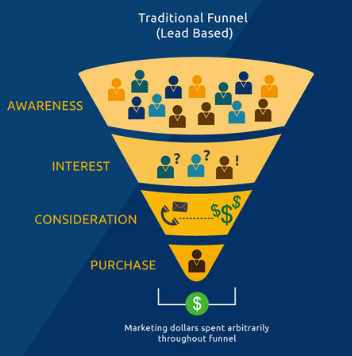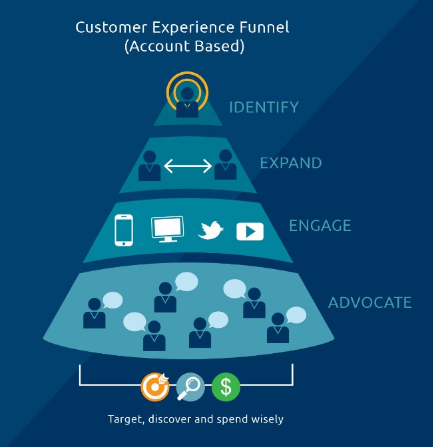Lead Generation
The lead generation process helps you build interest in your products and acquire new customer leads. These leads can be gathered through a variety of channels like eBooks, guides, webinars, online tools and more. These leads are often created for list building, lead nurture or sales outreach.
Lead generation (creating new interest in your product or service) is an essential part of any business wishing to grow. Even if you only operate out of a single brick and mortar location, new customer foot traffic past your storefront is naturally a part of your lead generation strategy. Most businesses today need to find ways of generating this same spark of interest—but have to do so online.
Gathering leads online poses new, unique challenges that the physical storefront may not have. The first, most apparent issue, is that “foot traffic” is difficult to come by online. Traffic must be earned through SEO, social media channels, or bought with ads. But once you are able to bring people to your site, you’re still not done.
Information is the currency of the web. You may want the visitor to subscribe, fill out a form, or leave their name and email, but the visitor won’t do this without anything in exchange. Giving the visitor a reason to exchange their information is called providing a value offer but is also referred to as lead magnet, or lead bait.
We’re lucky to have so many value offer options when choosing a lead generation strategy. The basic plan is to offer an asset of real value for free in exchange for contact information such as name, email, or other helpful information.
Some of these list-building options involve in-person interaction. Some are entirely online. Choosing what fits best within your marketing plan is more important than choosing any one specific strategy.
Value Offers
No one lead magnet is best. What’s most important is that it’s perceived to have value to your customer and delivers on that promised value. Think about when you give out your email address. Users guard their email and will only exchange it when they believe and trust that the exchange will be worthwhile.
The best lead magnets have several standard features.
1. Addresses a real problem that your customer faces.
2. Promises a quick win.
3. Are specific in the value offered.
4. Are easily assessed or digested.
5. Perceived as high-value.
6. Instantly available.
7. Relevant to the host’s domain.
Once you’re driving traffic to your site and gathering leads with your value offers, you’re generating leads! If your traffic sources are organic and earned, you can anticipate a steady flow of leads as long as you maintain your earned traffic. If your traffic is bought through ads, you can monitor the flow of leads and adjust your traffic accordingly.
Is lead generation sales or marketing?
The lead generation process is typically owned by the marketing team but is definitely developed and maintained through collaboration with sales. It’s helpful to think of lead generation as a feedback loop between the leads delivered by marketing, and their sales experience. You can increase your lead quality by closely monitoring results and encouraging communication between your sales and marketing teams.
It’s important to remember that once you’ve captured a lead, there’s still much more to do. After the lead is earned, you’ll need to nurture your leads.
Lead Nurture
Lead nurturing is the practice of helping your contact down the sales funnel by delivering timely and relevant content. This is accomplished by thorough lead segmentation, and message personalization.
Lead nurture is the process of building relationships and trust with your customers. Answering their questions, and delivering value through the customer experience. The types of content that a customer finds valuable will change as they progress through the sales process. Lead nurture is where you deliver those valuable interactions at the right time.
-
Lead Segmentation
Segmentation is the process of separating your contact list into groups by a chosen characteristic. These groups can be qualities of the contact themselves, such as income or interests. These identifiers can, and should, also include sales-actions indicating the buyer’s journey position. You likely have a variety of customers. Creating unique experiences for them is a powerful way to build relationships, and increase sales.
-
Personalization
Automation platforms allow for a variety of personalization options. These options can include contact names in the subject lines or email bodies to changing pieces of content (like images) on a webpage to match a segmented group of visitors.
-
Timely and Relevant Value
Once you’re segmenting your audience and personalizing the customer experience, your focus should be to provide valuable and timely assets to help them along the buyer’s journey. The types of emails, links, and content that are helpful and appreciated early on in the decision process are much different from those that are appreciated near the end.
For example, near the beginning of a customer’s experience with your brand, they might appreciate content explaining your product or service. Near the middle of the journey, they might want content comparing similar products or companies via pricing guides or feature comparisons. Near the end, a customer might be concerned with return policies, guarantees, promotions, or bundles
-
Your Marketing Automation Strategy
Effective lead generation is an important part of every business. With powerful and effective marketing automation, your lead generation strategies can help you reach your business goals.
If you’d like to learn more about marketing automation, lead generation, and what it can do for your business, you can read more in our marketing automation essentials eBook.
If you’d like to see how Epic Marketing can help your business develop effective lead generation, fill out our form at the bottom of the page and we’ll get in touch with you right away.






















